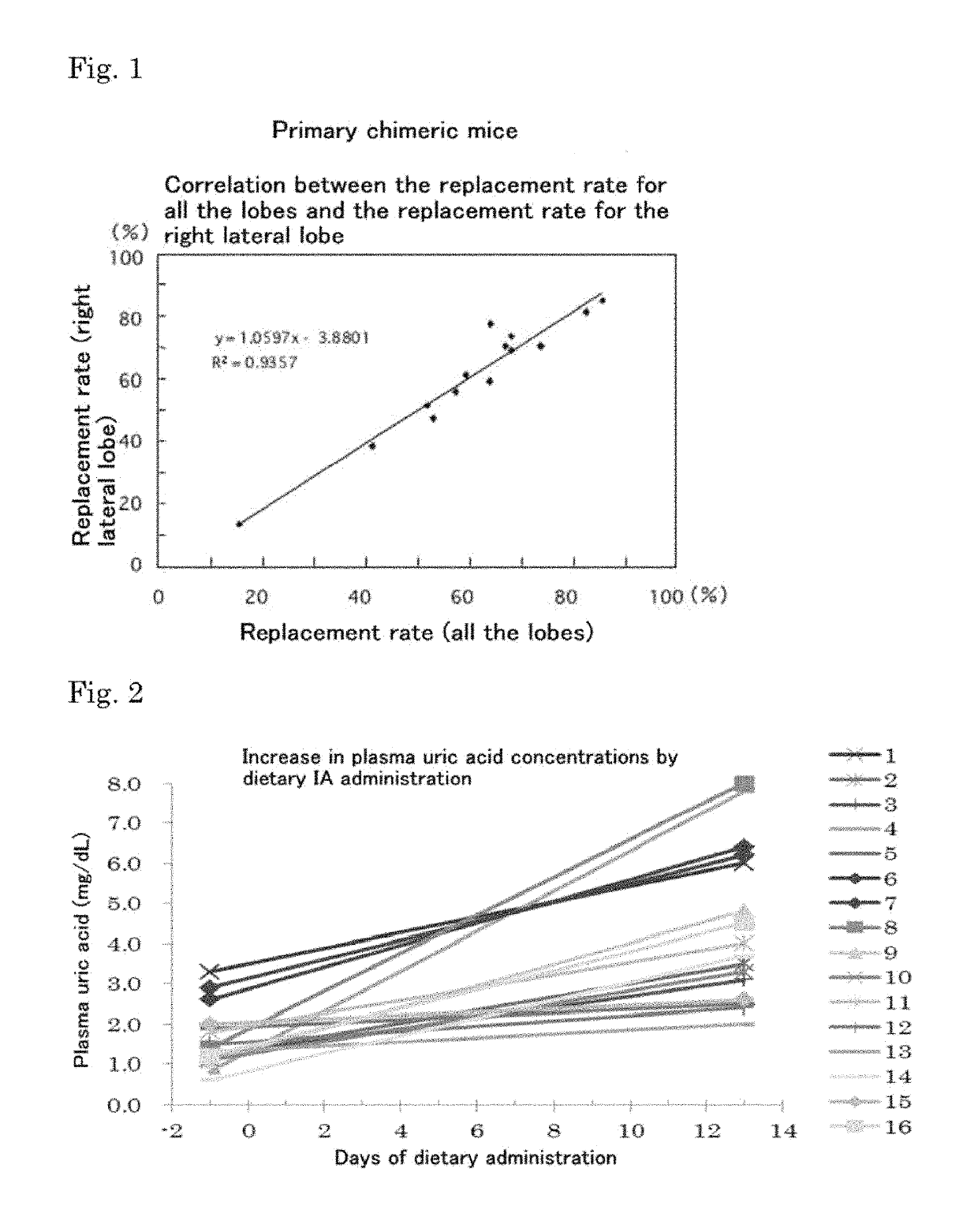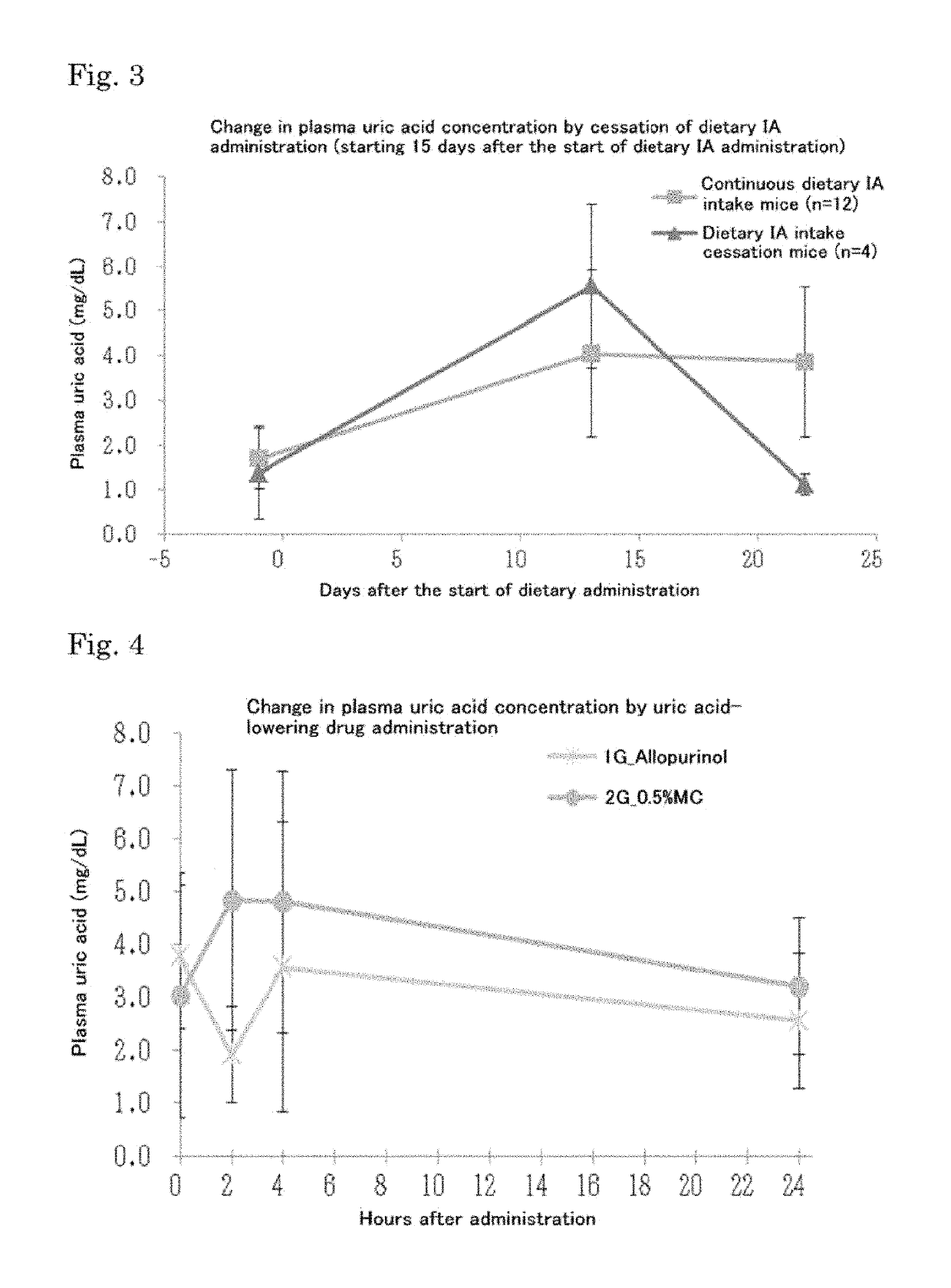Mouse model of hyperuricemia
a hyperuricemia and mouse model technology, applied in the field of mouse model of hyperuricemia, can solve the problems of increasing the risk of developing urolithiasis, urolithiasis, gouty nephropathy and other pathological conditions, and the need for continuous administration of oxonic acid for retention of pathological conditions, so as to achieve sufficient body weight, suppress the production of uricase, and increase the level of plasma uric acid.
- Summary
- Abstract
- Description
- Claims
- Application Information
AI Technical Summary
Benefits of technology
Problems solved by technology
Method used
Image
Examples
examples
[0142]Hereinafter, the present invention will be illustrated in more detail by examples, but the present invention is not limited thereto.
(1) Production of Primary Chimeric Mice
(1-1) Production of Immunodeficient Mice With Liver Dysfunction
[0143]Two rounds of backcrossing of uPA-Tg mice (hemizygote, + / −) to SCID-bg mice produced mice with the genotype uPA-Tg(+ / −)SCID(+ / +). Sperm was collected from the male uPA-Tg(+ / −) SCID(+ / +) mice and used for in vitro fertilization of unfertilized eggs of SCID mice (homozygote, + / +). The fertilized eggs were transferred to a surrogate uterus. From among newborn mice, the ones carrying the Tg gene were selected and allowed to naturally mate. As a result, mice with the two phenotypic traits, i.e., uPA-Tg(+ / −) / SCID(+ / +) mice were produced. To distinguish between uPA-Tg(+ / −) and uPA-Tg(− / −), genomic PCR was performed using transgene-specific sequences as primers.
[0144]
(SEQ ID NO: 1)5′-GGGCGGCGGTACCGATCCTGAGAACTTCAGGGTGAG-3′Reverse prime...
PUM
| Property | Measurement | Unit |
|---|---|---|
| concentration | aaaaa | aaaaa |
| concentration | aaaaa | aaaaa |
| concentration | aaaaa | aaaaa |
Abstract
Description
Claims
Application Information
 Login to View More
Login to View More - R&D
- Intellectual Property
- Life Sciences
- Materials
- Tech Scout
- Unparalleled Data Quality
- Higher Quality Content
- 60% Fewer Hallucinations
Browse by: Latest US Patents, China's latest patents, Technical Efficacy Thesaurus, Application Domain, Technology Topic, Popular Technical Reports.
© 2025 PatSnap. All rights reserved.Legal|Privacy policy|Modern Slavery Act Transparency Statement|Sitemap|About US| Contact US: help@patsnap.com


